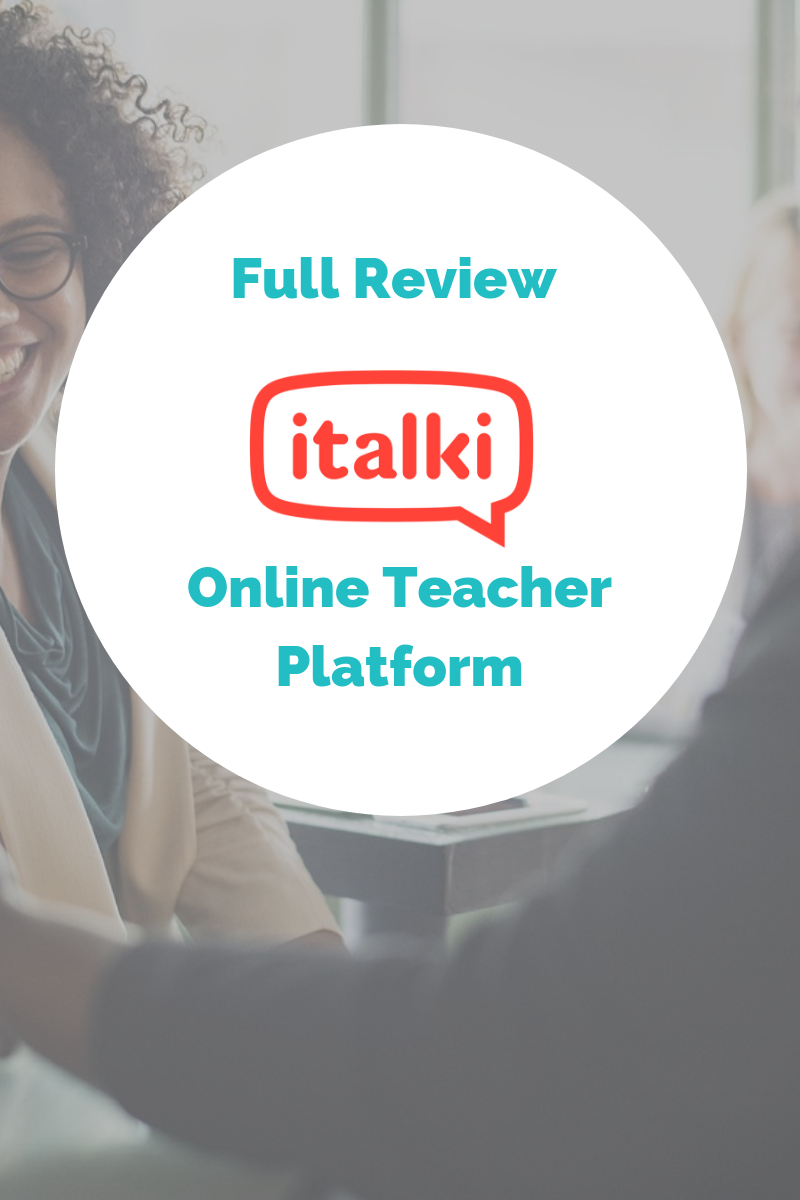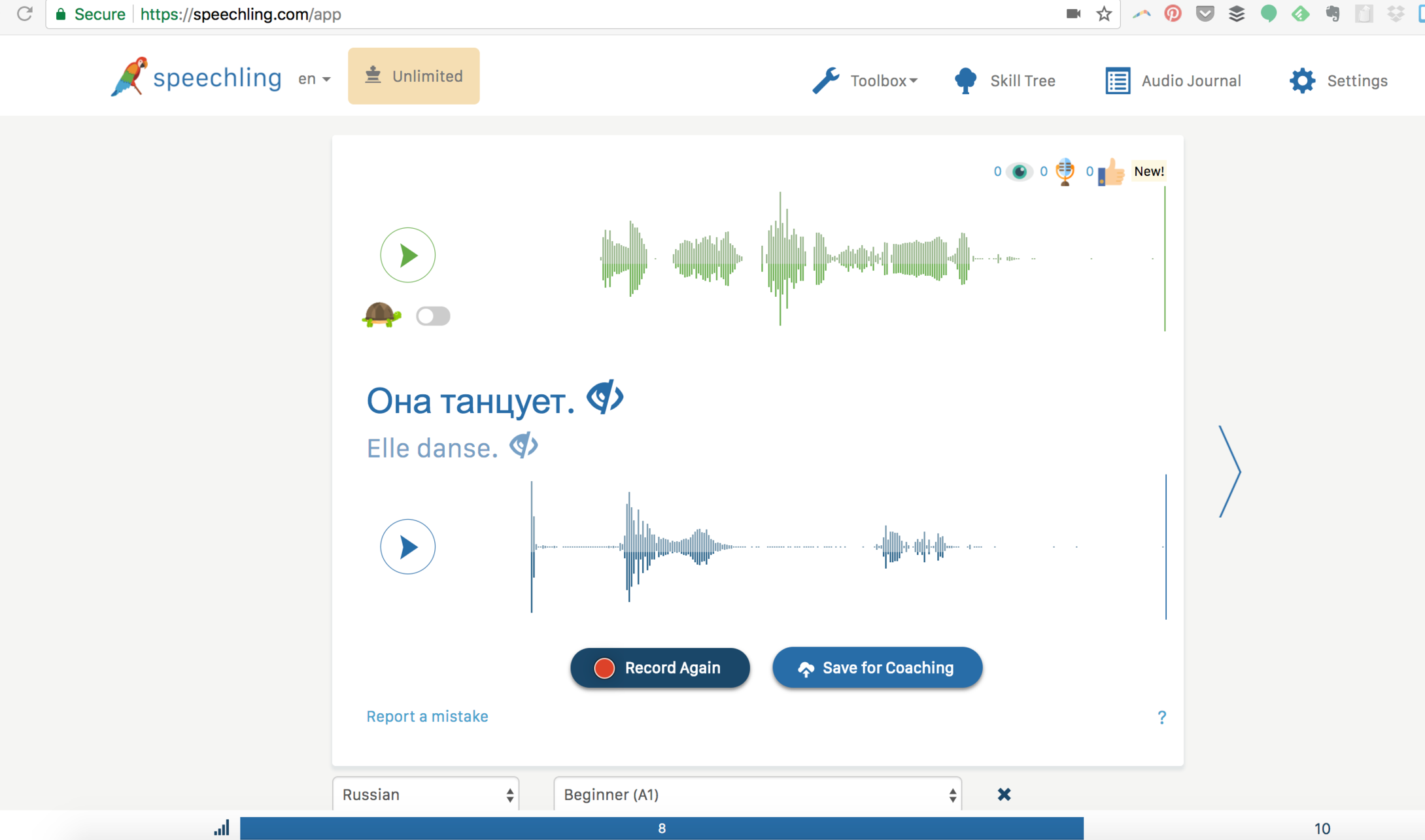Finding a good language teacher isn’t necessarily an easy task. For those who don’t have a lot of local tutoring options or for those learning a less popular language, it can sometimes feel impossible.
Maybe you’ve had no luck finding teachers or language exchange partners in the past and you’re wondering if online teaching sites are a good idea. Maybe you’ve thought about trying one before, but didn’t know which option to choose.
In this review, let’s take a look at what italki is all about, what it has to offer, and how to make the most of its features to help you connect with others.
What is italki?
In short, italki is an online platform that connects language learners with both professional teachers and community tutors.
Currently, there are over a hundred languages for learners to choose from, including German, Chinese, Catalan, Armenian, and Esperanto. Since all lessons are done online, there’s also greater chance you’ll be able to find someone who teaches a language you’d like to learn.
How Do You Use It?
Like lots of language learning resources, it sounds great, but how easy is it to use?
Setting up an account only takes a few minutes and it’s free. After that, you can simply select a language from search bar to start looking for a teacher.
Finding a Teacher on italki
One thing I liked about this process was the fact that I could review all the available teachers before commiting to a decision. Each teacher on italki has a profile with a video introduction, a short description, a list of their teaching strengths, a list of the type of lessons they offer, and different costs. Professional teachers will also have a list of education and experience.
Once you find a teacher you’d like to schedule a lesson with, you’ll have to purchase italki credits, which can be done at any time from one of the options in the top menu. It doesn’t take long and there are a few different payment options, but keep in mind that each option has a different processing fee. After you’ve added enough credits, you can schedule a lesson.
Booking a Language Lesson
The booking process is simple and straightforward. Clicking ‘Schedule Lesson’ opens a window that lets you pick the language, lesson time, and lesson duration. New italki accounts have the option to select a 30 minute trial lesson, which is meant to help you get used to scheduling lessons and using the platform. It’s also great if you’re feeling nervous about your first lesson. You can use the shorter time period to test your connection, see how things work, and ask the teacher any questions you might have.
Once you pick a date and time for your lesson based on the teacher’s availability, you can also select an alternate way to connect for your session, like via Skype. I’d recommend entering in this information since the italki classroom is currently still in beta and can experience glitches.
After your lesson is completed, italki will ask you to verify that the lesson took place. If you did experience any issues, you’ll want to let them know. Then, you can leave a review for your teacher to share your thoughts on how the lesson went.
How Can I Get the Most out of Italki?
Since italki is focused on connecting language learners and teachers, it’s important to remember that your experience will depend on how you use it to interact with others. If you want to make the most of it, there are a few things you should keep in mind:
Think about Your Own Language Learning Goals
Do you want to learn a language in order to travel? Are you trying to pass a test?
There are a lot of teachers on italki and they all charge a different rate. I found that knowing my own language goals was one of the best factors in finding a good teacher, not price.
For instance, one of my reasons for learning Spanish is to have conversations with my Spanish-speaking, Latin American side of the family. So, when searching for a Spanish teacher on italki, I’m a bit more particular about finding someone who speaks Latin American Spanish and seems like someone I could easily talk to.
However, someone who wants to learn Spanish to travel to Spain or needs to pass the DELE Spanish Exam will have a better learning experience with a different teacher.
Once you’re a bit more clear on your own goals, you can use that information to help you pick a teacher. Pay special attention to:
Introduction videos
Teacher specialties
Lesson types
Reviews
To learn more about what you get for your money, read How Much Will You Pay For a Language Tutor?.
To Get The Best Italki Results: Be Patient and Prepared
Even if you think you’ve found a good teacher, you never know what a lesson might be like. You could find it hard to talk to each other or you might not care for their style of teaching.
Just remember that you won’t connect well with everyone. Don’t take it as a sign to give up. There’s nothing wrong with trying several teachers.
Starting a Brand New Language on italki
One thing that helped me was to be prepared ahead of time. My most recent italki lesson was for Arabic, a language I knew almost nothing about. Before the lesson started, I wrote down a few initial questions and made sure I had a notebook and pen nearby. I think even this small preparation helped me focus a bit more during the lesson, even though I didn’t feel confident.
Be conscious of any practical steps to need to take ahead of time as well, including finding a quiet room and making sure you have a fast, stable internet connection. It can go a long way in making sure your session goes smoothly.
Don’t Ignore the Other Italki Features
One-on-one lessons aren’t the only thing italki has to offer, but a lot of people either forget about or don’t bother with some of the other cool resources.
Improve Your Writing Skills With Feedback
Unter the Community tab of the main menu, you’ll find articles, a notebook to write things down in a language you’re learning, a place for questions and discussions, and a way to find conversation exchange partners.
If you’re interested in improving your writing skills, you’ll definitely want to try the notebook feature. You’ll be able to post an entry in your target language and native speakers have the option to give you feedback and corrections.
Similarly, you can check the Answers or Discussions pages if you have small questions or simply want to start a conversation. Any of these options is also a great opportunity to connect with others on the platform and find language exchange partners.
So, Should You Give Italki a Go?
Hopefully, this review has given you a bit more insight into how italki works and how you can make the most of its features to help you learn a language.
My honest advice is to start by making an account and simply searching for teachers. Take a look at the costs and click the small heart symbol to bookmark any teachers that you think might be a good fit. I’ll admit that I nervously did that for a bit before I finally took the chance and scheduled my first lesson.
The nice thing about italki is that you can just add a few italki credits and try it out. It’s not a big commitment, but it has a lot of potential to be extremely helpful.
italki: Better Than Your Local Class
Overall, I found the site incredibly easy to work with and much better than trying to find a class or a private tutor to connect with locally. So, if you think it might be a good resource for you, try at least one lesson. I think you’ll like your experience.
This review is part of a sponsorship from italki. It was written by Cassie Wright. To learn more about italki and get $10 of free lesson credit, go to www.fluentlanguage.co.uk/italki.








